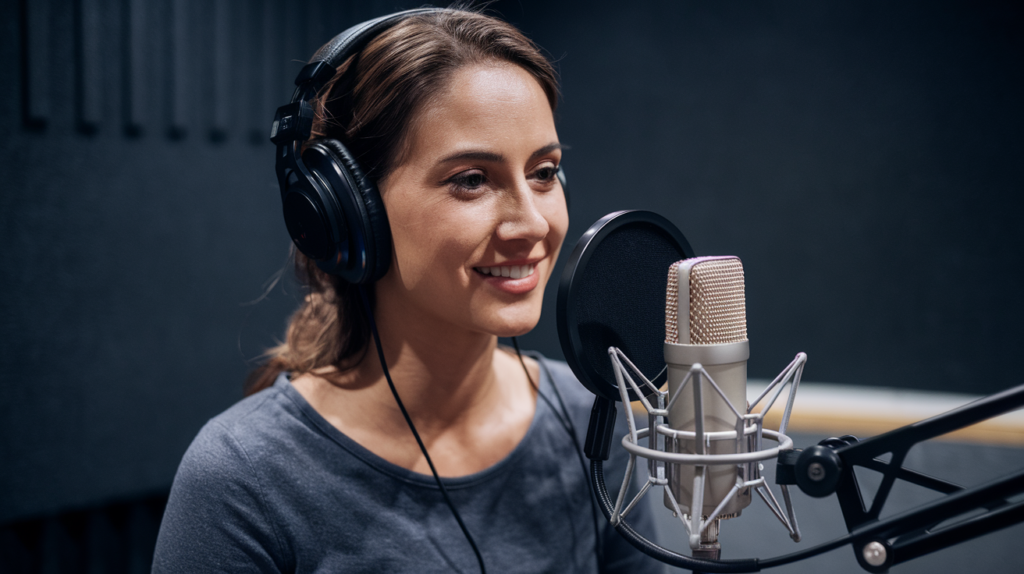Key Takeaways
- Importance of Accent Selection: Choosing the right Romanian accent is critical for audience engagement and can significantly impact a dubbing project’s success.
- Overview of Regional Accents: Romania features diverse regional accents like Bucharest, Transylvania, Moldavia, and Dobrogea, each with unique characteristics that evoke different emotions.
- Target Audience Consideration: Understanding your target demographic is essential; different accents resonate differently with various age groups and cultural backgrounds.
- Cultural Context Matters: Each accent carries historical influences that enhance authenticity—consider how these nuances align with your project’s themes and narratives.
- Character Authenticity: Selecting an appropriate accent for voice actors enhances character believability and connection, enriching storytelling through relatable performances.
- Impact on Engagement: The choice of accent not only affects relatability but also deepens emotional connections between characters and audiences, enhancing overall viewer experience.
Ever wondered which Romanian accent to use in dubbing? Choosing the right accent can make or break a project, especially when you want to connect with your audience. With Romania’s rich tapestry of regional accents, it’s crucial to pick one that resonates and feels authentic.
Overview Of Romanian Accents
Selecting the right Romanian accent for dubbing projects plays a crucial role in audience engagement. Romania boasts a rich tapestry of regional accents, each carrying unique characteristics that resonate differently with listeners.
Historical Background
Romania’s linguistic landscape reflects its complex history. The influences of Latin, Slavic languages, and even Hungarian have shaped the way accents developed over centuries. For example, urban centers like Bucharest exhibit a modernized accent influenced by various cultural exchanges, while rural areas often retain traditional sounds. Understanding this historical context can guide your choice in selecting an authentic voice actor or artist that resonates with specific audiences.
Geographic Distribution
The geographic diversity of Romania contributes significantly to its accents. Different regions—from Transylvania to Moldavia—possess distinct phonetic traits and intonations.
| Region | Key Characteristics |
|---|---|
| Bucharest | Urban tone; more neutral sounding |
| Transylvania | Unique melodic quality; slight German influence |
| Moldavia | Strong vowels; softer consonants |
| Dobrogea | Influenced by Turkish; distinct rhythm |
When considering voice talent for dubbing, knowing these geographic distinctions helps you choose an accent that aligns with your project’s target demographic. Each region’s accent can evoke different emotions and responses from audiences, making it essential to match the right voice over talent to your project’s needs.
Popular Romanian Accents In Dubbing
Selecting the right Romanian accent in dubbing can enhance your project’s authenticity and audience connection. Here’s a closer look at some popular accents that voice actors often use.
Bucharest Accent
The Bucharest accent stands out as the most recognized in Romania. It features a clear, neutral tone that’s easy to understand, making it ideal for mainstream media projects. Voice talent from this region often skillfully blend local nuances while maintaining universal appeal. If you’re aiming for accessibility and broad audience reach, the Bucharest accent might be your best bet.
Transylvanian Accent
Transylvania is known not just for its picturesque landscapes but also for its distinct accent. This accent carries a melodic quality with influences from both Hungarian and German languages, reflecting the area’s rich cultural history. Voice artists using this accent can evoke a sense of mystery or charm, which works well in fantasy genres or narratives requiring depth and character. Consider this option if your project aims to capture attention through uniqueness.
Moldovan Accent
The Moldovan accent offers a softer tone compared to others, characterized by slight vowel shifts and unique intonations. This regional flavor brings warmth and familiarity that resonates particularly well with audiences familiar with rural settings or folk themes. If you want your voiceover talent to convey emotions tied deeply to tradition or community, choosing the Moldovan accent could create an inviting atmosphere for listeners.
Understanding these accents helps you select voice actors who not only deliver quality performances but also align linguistically with your target demographic’s expectations and preferences.
Considerations For Choosing An Accent
Selecting the right accent for your dubbing project involves several key considerations that can impact audience engagement and overall effectiveness.
Target Audience
Understanding your target audience is crucial. Different Romanian accents resonate differently with various demographics. For instance, if you aim at younger viewers, a Bucharest accent might be more relatable due to its prevalence in urban media. Alternatively, a Moldovan accent could appeal to audiences seeking warmth and tradition. Knowing who you’re trying to reach helps narrow down the voice talent options that align best with their preferences.
Cultural Context
Cultural context also plays a vital role in accent selection. Each Romanian region carries unique historical influences that shape its dialects. For example, the Transylvanian accent may evoke feelings of mystery or charm due to its rich folklore associations, making it suitable for fantasy genres. Understanding these layers adds depth to your project and enhances authenticity in the voiceover performance.
Character Authenticity
Character authenticity hinges on selecting an accent that fits the narrative and personality of your characters. A voice actor’s ability to embody a character’s traits through their accent significantly impacts believability. If a character hails from Transylvania, using a local accent not only enriches storytelling but also connects better with audiences familiar with those nuances. Prioritize casting voice artists who can authentically convey emotions tied to specific regional accents for maximum impact.
By carefully considering these aspects—target audience, cultural context, and character authenticity—you enhance the likelihood of connecting deeply with viewers through effective dubbing choices.
Impact On Audience Perception
Selecting the right Romanian accent for dubbing significantly influences how audiences perceive your content. A well-chosen accent can enhance engagement and foster a deeper emotional connection with viewers.
Engagement Levels
Engagement levels depend on the familiarity and relatability of the accent used. For instance, a Bucharest accent often captures younger audiences with its clear, neutral tone, making it easier for them to relate to characters. On the other hand, accents from Transylvania may intrigue listeners with their melodic qualities, drawing them into stories filled with charm or mystery. When you select an appropriate voice talent who embodies these regional characteristics, you create an immersive experience that keeps viewers interested.
Emotional Connection
The emotional connection between characters and audiences hinges on authenticity. Accents carry cultural nuances that evoke specific feelings; for example, a Moldovan accent—known for its warmth—resonates deeply with themes of tradition and community. By employing voice actors who naturally speak these accents, you’re not just adding authenticity; you’re also enhancing storytelling by creating relatable characters that resonate emotionally. Understanding this dynamic allows you to choose voiceover talent capable of delivering performances that truly connect with your audience’s hearts and minds.
Recognizing how different Romanian accents affect audience perception helps in selecting ideal voiceover artists who create engaging experiences through authentic representations of culture and emotion.
Conclusion
Choosing the right Romanian accent for dubbing isn’t just a stylistic choice; it’s about connecting with your audience on a deeper emotional level. By understanding the unique characteristics of each accent and their cultural backgrounds, you can make informed decisions that enhance storytelling.
Whether you opt for the neutral tone of Bucharest or the melodic charm of Transylvania, each accent offers distinct advantages tailored to specific demographics. Prioritizing authenticity in voice talent ensures your characters resonate with viewers, creating a more engaging experience.
Ultimately, selecting an accent that aligns with your project’s goals will elevate its impact and foster lasting connections with audiences.
Frequently Asked Questions
What is the importance of selecting the right Romanian accent for dubbing projects?
Choosing the appropriate Romanian accent is crucial as it significantly impacts audience connection. The right accent resonates with listeners, enhancing their emotional engagement and relatability to characters.
How many regional accents are there in Romania?
Romania boasts a diverse range of regional accents, including those from Bucharest, Transylvania, Moldavia, and Dobrogea. Each accent has unique characteristics that appeal differently to various audiences.
What are some key characteristics of popular Romanian accents?
The Bucharest accent is clear and neutral; the Transylvanian accent is melodic and charming; while the Moldovan accent offers warmth and tradition. These traits influence audience perception and engagement.
Why should cultural context be considered when choosing an accent?
Cultural context matters because regional accents carry historical influences that enhance storytelling. Understanding these nuances helps align voice talent with the project’s themes and target demographics.
How does character authenticity relate to accent selection in dubbing?
Character authenticity hinges on using voice actors who convincingly embody their roles through specific regional accents. This alignment deepens audience engagement by creating relatable characters rooted in cultural nuances.







